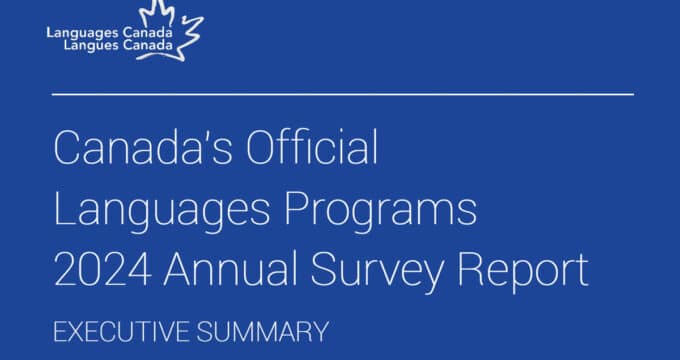Canadian language schools weather another decline in 2021 but emerge with “optimism for recovery and growth” in 2022
- Canadian language schools endured another year of enrolment losses in 2021 as the pandemic stretched on, but the decrease was less steep than in 2020
- Japanese students now compose the largest share of students enrolled, followed by Colombia – both countries sent more students in 2021 than in 2020
- By contrast China and Brazil sent 32% and 44% fewer students, respectively
Languages Canada has released its latest report, 2021 Annual Report on Language Education in Canada, which examines international student enrolment trends in English- and French-language programmes in 2021. The report is based on a survey of 189 members of Languages Canada carried out by the research firm Bonard. The largest share of participating schools was in Ontario (40%), followed by Quebec (22%) and British Columbia (20%).
Numbers decline, but less steeply than in 2020
Last year, roughly 57,400 students were enrolled in Canadian language programmes (52,750 in English, 4,670 in French), representing only a third of the number enrolled before the pandemic in 2019, and a 12.4% decrease from 2020. Languages Canada says this is “the lowest number since the association began collecting student data via the annual members’ survey in 2008,” noting that 2021 figures “tell the full story of the impact of border restrictions, visa delays, costly testing and quarantine requirements, provincial lockdowns, and classroom capacity limits.”
The decrease in 2021, however, was not as sharp as in 2020 (56%). In 2021, many schools had adapted their course delivery models. Last year, half (51%) of the total number of student weeks delivered by Canadian language schools were delivered online only (27% in Canada, 24% outside Canada), while 20% were delivered through a hybrid/blended model. Only 29% of student weeks happened in-person, down from 33% in 2020.
Student weeks fell by 6.1% to 721,470, a smaller decrease relative to the dip in student numbers and especially relative to the decrease in weeks registered in 2020 (-49%). International students stayed in Canada for language studies for longer in 2021 than 2020 (12.6 weeks vs. 11.7, respectively). Longer average stays were at least in part related by students deciding to make their travel to Canada worth their while given all the travel and quarantine requirements that existed for long stretches of last year.
Top markets shift
Japan (6,414 students) and Colombia (6,247 students) are now the largest sources of enrolments for Canadian language schools. Japanese numbers grew by 15.4% and Colombian numbers grew by 72.6%, putting them ahead of China and Brazil in terms of enrolments. Chinese enrolments fell by 32% in 2021 and Brazilian numbers fell by 44%. By contrast, Chile is now contributing many more students (+95.1%) to Canadian language programmes.
Junior segment shrinks
In 2019, junior students composed 13% of Canada’s total language-training market. After falling to 5% in 2020, the share of junior students dropped to 3% in 2021.
Visa backlog a barrier to sectoral recovery
More than half (58%) of schools said that visa processing times and students’ difficulties in obtaining visas were their biggest concerns in 2021. Language Canada says visa challenges represent “an issue which has continued into 2022 and is currently the single biggest factor impacting the sector’s recovery.”
Optimism for the future
Despite ongoing challenges, Languages Canada says,
“The language education sector emerged from 2021 with optimism for recovery and growth into 2022. With most border restrictions and quarantine requirements eased by fall 2021, Canada is positioned as a top choice destination for English and French language students. In fact, Canada gained global market share in the English Language Travel sector over the pandemic, from 12% in 2019 to 17% in 2020 (the most recent year available) and experienced less decline in student numbers in 2021 than competitor destinations UK, Australia and Ireland.”
For additional background, please see:
Most Recent
-
The surging demand for skills training in a rapidly changing global economy Read More
-
US issues corrected student visa data showing growth for 2024 while current trends point to an enrolment decline for 2025/26 Read More
-
Survey finds US institutions expanding agency engagement and focusing on new student markets Read More


















